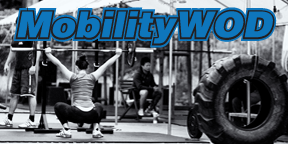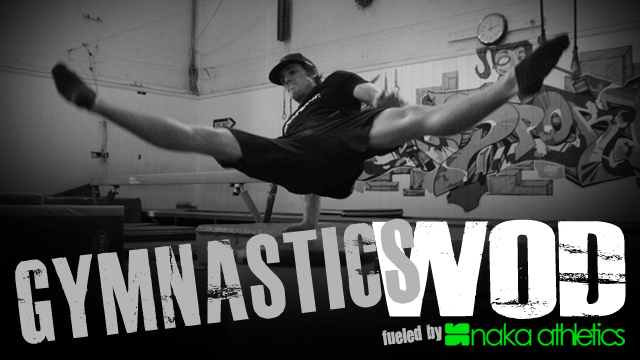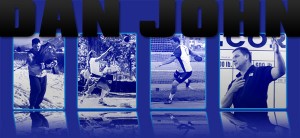8
Oct / 10
The Benchmark 5k
posted by: Ruth
Each and every one of you acknowledge that olympic lifts and power lifts take time, effort, and dedication to learn, much less master. Each and every one of you have put in time this last month to learn skills and drills to help you accomplish this. However, most of you (including me) don’t feel this way about running. You just go out and put one foot in front of the other…quickly…right?
This assumption is the main reason that people who run are almost always nursing or recovering from some type of acute or chronic injury. This month, we will be concentrating on the proper skills necessary to become a better runner.
This free CrossFit Journal article by Keysha McClenton talks about good vs bad form while you run and the biomechanics behind it. There are some great photos of do’s and don’ts on there, so take a look before class today.
Let’s briefly talk about pacing strategy as well. There’s an article on Running Planet that breaks down the pacing for the entire 5k for beginners to recreational runners to pacers, beginning competitive runners, and experienced competitive runners.
The short and sweet of it is if you’re a:
Beginner Runner: Plan to run an even effort throughout until the last 200m where you give it your all. Effort is relative, so remember that it may mean you run faster downhill than uphill based on even effort.
Recreational Runner: Plan to run an even pace until the last 400m where you kick it into gear. Try to keep your miles per hour even through the race.
Pacer: This is someone who is running for a time goal (5k in under x minutes). Negative splits may be your focus. Run the first mile of the race at an even pace or 3% faster than your average split times and start slowly speeding up that last mile, with the final 400m in high gear.
Beginning Competitor: Negative splits and/or Middle Push/Strong Finish. Similar to Pacer strategy, but the speed starts to kick in during the middle mile and the last one is a steady acceleration until the last sprint kick.
Competitor: Strong Start/MIddle Float, with a Strong Finish. Start 3-6% faster than your average split times. Gradually increase speed during the middle mile or float with surges. Increase the pace during the final mile with strong acceleration during the last 800m and a last 300-400m sprint.
**Pay attention to what starts to hurt, ache, or tighten up during the run. As I’ve posted before, running should not hurt, and any injuries you sustain from running can be linked directly to breakdown of form. Keep a tally in your mind and make sure you write it down after the run. We’ll take a look at what you come up with this weekend and give you some drills to work on. Steph will be ready to prescribe all sorts of foam rolling, stretching, and self myofascial release as well. **
Hope this helps! Bring your friendly mp3 and headphones if you like!


 310.465.6565 |
310.465.6565 |




















12 Responses to “The Benchmark 5k”
Drew
October 8, 2010 at 7:00 AM
Good luck everyone, Jenna and I will probably cover this same distance walking the streets of SF today. See everyone Monday!!
Justin
October 8, 2010 at 8:27 AM
tip 1: watch out for cars.
tip 2: don’t daydream, get lost and accidentally run to the embassy suites on washington.
Nick
October 8, 2010 at 8:39 AM
I feel since this is a CrossFit WOD, it should say something like “3 rounds: 5k running, 20 burpees for time.”
duly noted. That wod will be called Nick’s Revenge ?
-ruth
Michael H
October 8, 2010 at 9:36 AM
My knees are worked from not rolling the bands enough yesterday. Good run, a few tips:
1) Bring tunes!
2) Keep those muscles warm, it gets windy on Imperial Hwy
3) Take advantage of the lawn on Main St to ease the impact
4) Look left, look right, look left, look right, chicken or the egg, look…
Enjoy!
Pooja
October 8, 2010 at 9:49 AM
hahaha mike. hilarious. and nick! stop giving “helpful” suggestions.
Holley
October 8, 2010 at 10:15 AM
Ok Nick, you do that, the rest of us will run just 1 5K today.
Check out this photo of the week on MSN.com…looks like a painful failed clean and jerk. I’m guessing this is not a good example of how to dump this lift. http://www.msnbc.msn.com/id/39561797/from/ET/?beginSlide=8
Stephanie
October 8, 2010 at 11:09 AM
@ Justin – OMG I thought I was bad at direction!
First of many foam rolling suggestions:
Behind the knee pain – roll hamstrings, massage popliteus or the tight little muscles behind the knee
Front knee pain – roll quads especially middle and inner sections, roll IT band
Happy Running!
Anna
October 8, 2010 at 12:09 PM
I have a bunion (her name is clementine). She doesn’t like it when I run long distances. I’ve got orthodics… but they really don’t work.
Any Suggestions Doctor CFI?
Surgery is not an option, I think I’ve had enough lately!
Scott
October 8, 2010 at 12:28 PM
Interesting post Ruth. I’m not fast, but I must have run enough road races and triathlons to naturally drift towards the Competitor approach. That’s exactly how I attack a race. Usually it’s pushing fast for the first few miles, try to hold a steady pace during the middle miles, try to start picking it up at half way, and leave everything out there on the final mile.
@Anna, I’m no doctor or a trainer or in any way qualified to give advice …. but that wont stop me …. I’d try racing flats, vibrams, or something similar that emulates barefoot running. I’m a big believer after reading all the Pose running stuff from CF and reading Born to Run. It just seems to make sense that our feet were made to run without shoes and all that thick padding. Some barefoot running apostles even claim it helps bunions, because they say the shoes are causing the bunions by pinching your toes.
…. I’d try racing flats, vibrams, or something similar that emulates barefoot running. I’m a big believer after reading all the Pose running stuff from CF and reading Born to Run. It just seems to make sense that our feet were made to run without shoes and all that thick padding. Some barefoot running apostles even claim it helps bunions, because they say the shoes are causing the bunions by pinching your toes.
Michael H
October 8, 2010 at 1:31 PM
BTW, I think the end of month 5K should be @ the beach, pier to pier, round trip from Hermosa to Manhattan is exactly 3.2 miles – Celebrate the finish with a pint of beer.
ruth
October 8, 2010 at 2:19 PM
Only if it’s a GF beer, Michael!
@Scott, I’m with you on the benefits of barefoot running. There are other options to getting the Hobbit shoes. Sean’s been testing out the inov8′s which are flexible, have no heel-toe differential, and allow you to learn how to run properly while still protecting your foot.
@Anna, I’m sorry to hear about Clementine. I see she is the original saboteur behind Team Sabotage!!
Scott
October 8, 2010 at 3:28 PM
Ruth, I totally agree. I like my Inov8s a lot. I used them for my 10k. They are another great option.
Supposedly the Nike Free is another option, although I’m skeptical about that one. The padding seems a bit think. And is also seems like the original Free was about being minimalist and then more recent versions are trying to make it better….by adding padding!! Nike just can’t get away from the mentality of making a shoe that make you faster!!